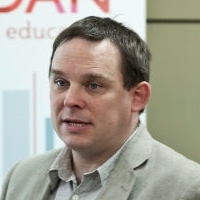Late last year, when Education Secretary Damian Hinds told universities and schools in the north-east of England that they had to “raise aspirations among all working class communities”, he was following in a venerable, if thoroughly ill-informed, tradition.
Twenty years earlier his predecessor, David Blunkett, invoked a “poverty of aspirations”, later reflected in the 2003 White Paper which stated (without evidence) that “aspirations are low” among “families without a tradition of going to HE”. This was echoed more recently by OfSTED Chief Inspector Amanda Spielman’s speech to the ‘Festival of Education’ in June, which asserted that white working class communities lack “aspiration and drive”.
Indeed, this trope – that disadvantaged young people are under-represented in higher education because they have low aspirations for education or their lives in general – has thoroughly permeated policymaking and practice. The national strategy document uses the word ‘aspiration’ 23 times and it’s asserted to be a key element in various vignettes of ‘good practice’ that it showcases.
Where’s the evidence?
The problem, as we explore in our recent paper in the British Educational Research Journal, is that there is very little evidence to support this.
Research using large-scale datasets has demonstrated that young people in general have high aspirations and that there are few differences in aspiration between different social class groups. In fact, many more disadvantaged young people say that they want to go to university than actually do, so it seems unlikely that it’s a lack of aspiration that prevents them from doing so.
Asking a young person if they expect to go to university may be a better indication of what they are likely to do years in the future. Importantly, expectations don’t just reflect whether someone wants to do something, but whether they feel they will able to, given the personal and social constraints that they face. Arjun Appadurai refers to this as being a different ‘capacity to aspire’.
Why then does the idea of “aspiration-raising” continue to hold such sway? It is now such an ever-present element of the discourse around access to higher education, but it was largely abandoned in the final years of New Labour’s Aimhigher programme (2004-2011) before creeping back into social policy once again during the Coalition – and as we explore in our paper, it’s now where outreach managers believe they are most successful.
The violence of aspirations
Pierre Bourdieu used the term “symbolic violence” to describe how a dominant social group successfully normalises the position of a subordinate group as being just due to their inherent shortcomings or malfeasance – making the arbitrary disadvantage appear natural, or even necessary. This is achieved by bringing the subordinate group to consent to the arbitrary criteria as being both objective and fair.
In some ways, it is similar to the idea of “blaming the victim” in common speech. However, it has the added dimension of relying on the victim to (unknowingly) collude in the process of normalisation – not to critique the system that sees them being becoming its victim.
We propose that the discourse of low aspirations and aspiration-raising is a clear example of symbolic violence. It is little more than a middle class conceit to explain away the manifestly unequal. It is easier to assert that working class young people are responsible for their unfortunate position than to concede the severity of the challenges and constraints that they face. This, after all, would carry with it the moral obligation to act to tackle these inequalities.
By setting out to persuade disadvantaged young people that it is their aspirations that need to rise, policymakers are setting an unrealistic challenge that it will be impossible to meet – positioning another generation to fail and further entrench the idea that they who are to blame. It will not impact the status quo, but it will make it feel more just.
Moving to more fertile ground
One alternative starting point might be to explore the belief that working class communities have about the linkage between educational success and life outcomes. Lynn Raphael Reed and colleagues explored communities with the lowest participation in higher education and concluded that “many young people grow up in environments where they rarely encounter educational or economic success – or the relationship between the two”. This is clearly distinct from aspiration and links more closely to the idea of expectation touched on above.
However, the unavoidable reality is that by far the strongest predictor for participation in higher education is attainment in school. Working class young people do not progress to higher education because they lack ambition, but because the accumulation of disadvantage throughout their childhood becomes embodied in their qualifications. Indeed, the modest diversification in higher education has closely echoed changes in attainment patterns over the last decade. Therefore, the clearest route to widening participation in higher education is to support the achievement of disadvantaged young people.
A ‘possible selves’ approach might be one way forwards. Demonstrated to be successful in a wide array of social fields – but with little use yet in education – it focuses on how we make links between future visions of ourselves and our current actions. Importantly, it sees the individual in their social context and supports them to build their own ways of getting to where they want to be, rather than berating them about their aspirations.














What a fantastic piece! I wonder how you see this fitting with moves to avoid a “deficit model” in the provision of various public services?
I agree- concise, elegant and compelling. I am currently experiencing comprehensive school education via my son and I am deeply shocked at the inadequacies which are played out on a daily basis. Aspirational children are ground down by the system and their wings are clipped. It’s a national tragedy.
I concur. My research found that regardless of soci-economic background, almost all children form aspirations whilst in primary school. Their aspirations erode if there is no clear pathway for realisation! The problem is capturing aspirations whilst they are warm and building a structural pathway for realisation.
This is very much the thinking behind the process of ‘elaboration’ within the theory of possible selves – developing detail, identifying pathways and devising strategies… https://www.mdpi.com/2076-0760/7/10/209